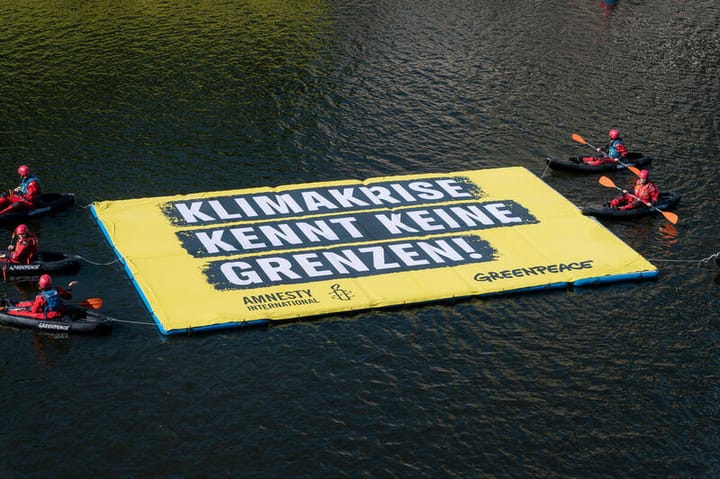How the Montana youth trial was reported around the world

The Montana youth climate case was first climate-related constitutional challenge to government conduct to make it to trial in the US. The Wave rounds up and analyses coverage of this important climate litigation milestone.
Unless you’d decided to undergo a severe digital detox over the past month, it’s unlikely the court hearing against the state of Montana brought by a group of young people passed you by. The trial, orchestrated by Our Children’s Trust, was the first climate-related constitutional challenge to government conduct to make it to trial in the US, and an important climate litigation milestone.
The Montana trial was previewed and covered around the world from France to China, with largely sympathetic treatment. In the US it was reported on in detail at a wide range of national, local and specialist publications. Prism, a non-profit news outlet led by journalists of color, prioritised coverage over other stories, describing it as a “monumental step for lawsuits of this kind”.
The young people at the heart of the case were understandably a focus of much of the reporting. Inside Climate News described how they were inspired by “love of the land and community”, noting that lead plaintiff Rikki Held’s name on the lawsuit and her identity as a young rancher “helps keep the case from looking partisan”. Prism said their ages underscored that young people must use the court system because they can’t vote or run for office.
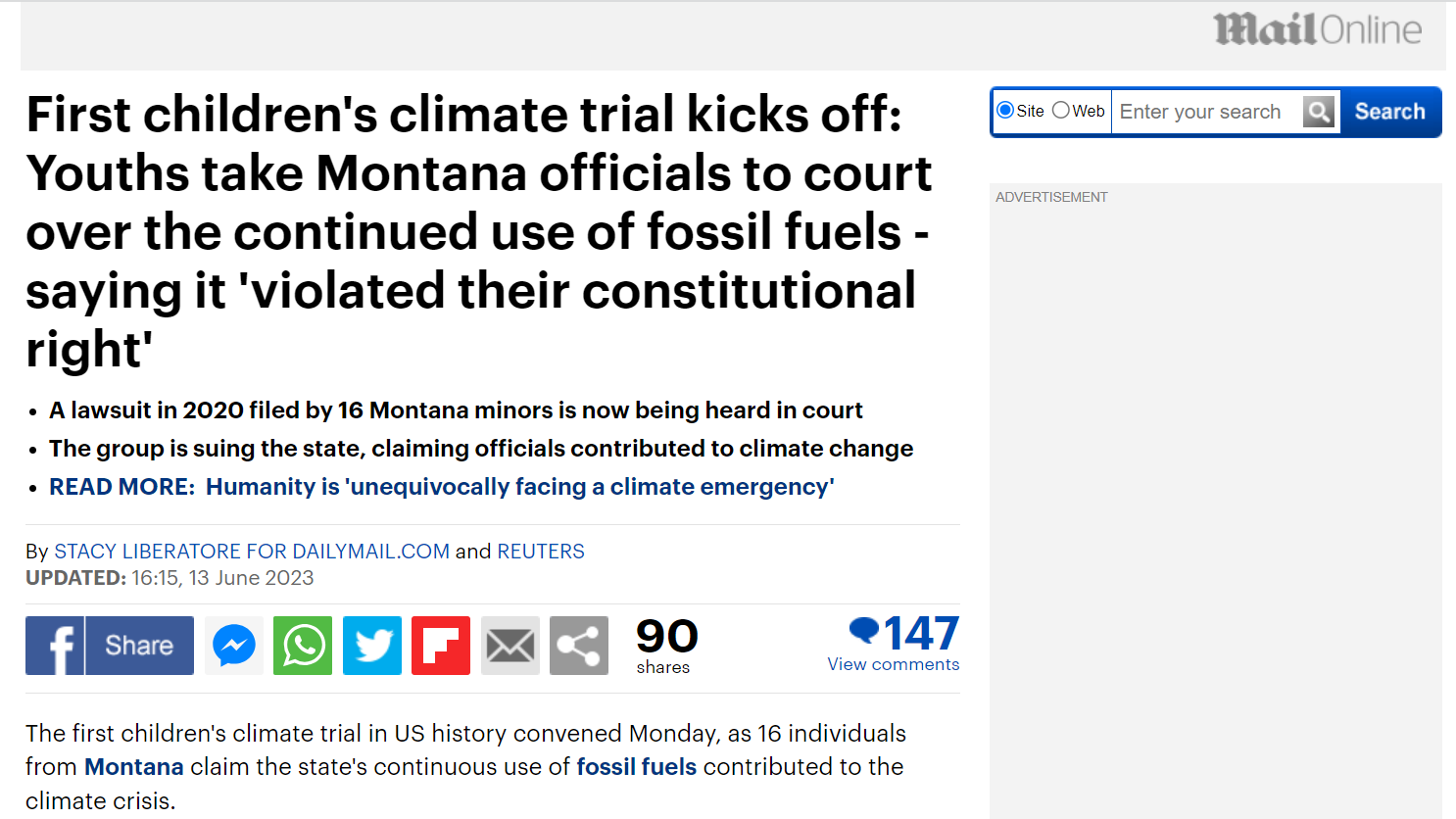
Even right-wing publications like the Daily Mail and Fox News covered the trial, both leading on a straightforward report of its climate arguments and quotes from the young plaintiffs.
However the Daily Mail built on a Reuters story quoting attorney Mark Stermitz, who is representing Montana, saying the trial would include “lots of emotions” and “lots of assumptions, accusations, speculation and prognostication and, notably, fear” about the future. The reality, he said, is “far more boring” than what the youth have claimed.
Cowboy State Daily, meanwhile, centred on detractors describing the lawsuit as “weaponising” the legal system and criticising climate activists as using “children to place their agendas and political theater in the spotlight”.
Other publications focused on the scientific and legal arguments at play.
Nature said climate science would get its “day in court”. It reported that Kathy Seeley, a Montana judge leading the case, was “seeking to determine whether the state’s policies are ‘a substantial factor’ in driving climate impacts such as droughts, wildfires and extreme weather”. Michael Burger, executive director of the Sabin Center for Climate Change Law in New York City, told the journal that witnesses for the youth plaintiffs would use attribution science to bolster their case.
In an article for the Brennan Center for Justice, meanwhile, Burger wrote that the plaintiffs “must prove a causal connection between the state’s actions, global climate change, localized climate impacts, and their individual harms”.
What’s being argued?
At the heart of the case is the question of whether Montana has complied with the state’s 1972 constitution, which provides the explicit right to a “clean and healthful environment”. (The Economist, incidentally, profiles Mae Nan Ellingson, who co-wrote that constitution over 50 years ago.)
This right is mentioned twice in the constitution, once as an “inalienable right” and then leading a section on the environment and natural resources: “The state and each person shall maintain and improve a clean and healthful environment in Montana for present and future generations.”
The young people, through their legal team, argue that, by prioritising and approving fossil fuel projects without considering their greenhouse gas emissions, the state is contributing to climate change and therefore breaching their rights.
The lawsuit challenges a 2011 provision to the Montana Environmental Policy Act (MEPA) that limits environmental reviews of major projects to considering impacts within the state’s borders, arguing that this provision amounts to a “climate change exception”.
It had also argued that a 2011 revision of the state’s energy policy was “amended to explicitly promote fossil fuels and to expand the already substantial extraction and use of fossil fuels in Montana”.
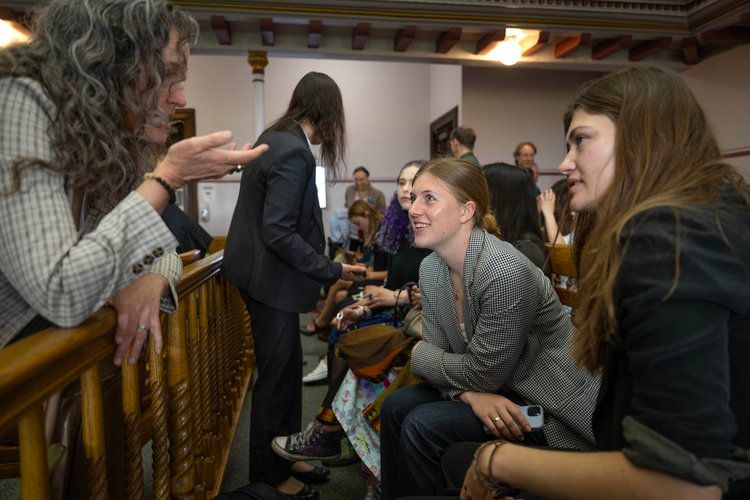
However, legislators passed a bill repealing the entire energy policy just months before the trial was due to start, leading judge Seeley to strike out that part of the complaint.
Seeley allowed the challenge to the Montana Environmental Policy Act to stand. However, E&E News reported, state attorney general Austin Knudsen told the Montana Supreme Court that the case is “erroneously headed to trial on claims challenging a former version of MEPA that no longer exists”.
To complicate things, Montana passed a law in the spring barring state agencies from considering greenhouse gas emissions or their effect on climate change when conducting environmental reviews of proposed projects. Inside Climate News described this as the “most aggressive” anti-climate law in the nation, and it appears to already have led to the revival of construction of a gas plant.
According to DeSmog, representatives and expert witnesses for the youth plaintiffs believe the new law was an attempt to “take a swipe” at their lawsuit.
Senators are also trying to make it harder for people to sue the state for environmental reasons.
The state fought tooth and nail to have the young people’s lawsuit thrown out. Knudsen even asked the Montana Supreme Court to dismiss it a week before the trial’s scheduled start, but his efforts were rebuffed.
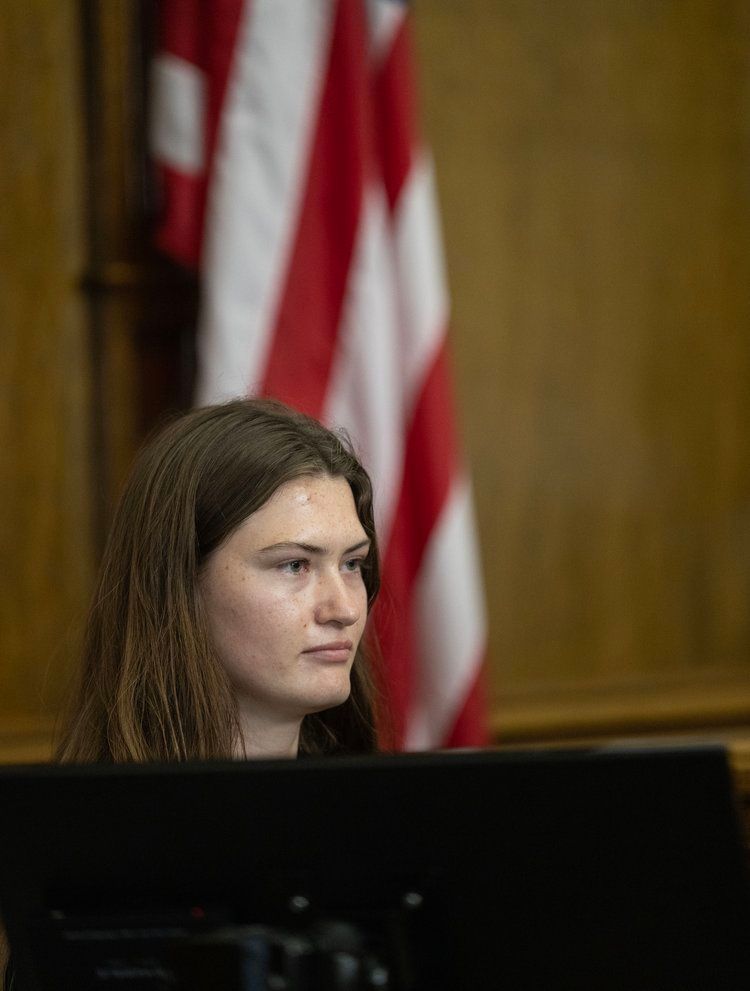
The trial
Coverage of the trial, which had been scheduled to last two weeks, focused on Held’s “emotional testimony”. She described the impacts the climate crisis has had on her family’s ranch and the effects on her psychological health.
Other reports also examined the health impacts of climate change on the youth claimants.
A high school athlete said increased smoke from forest fires had made it difficult for him to run races and a diagnosis of asthma had made him a “prisoner” in his own home. A pediatrician also testified about the wider physical and mental health effects of climate change on children.
Attorneys for the state did not closely question any of the plaintiffs’ claims about the physical and psychological harms they had suffered.
Other young people testified about the impact of climate change on indigenous traditions, relaying changes in the seasonal ripening of chokeberries.
The plaintiffs put forward a number of expert witnesses to outline the climate science and put it in context. Steven Running, professor emeritus at the University of Montana who contributed to the IPCC’s Fourth Assessment Report and shared a Nobel Peace Prize awarded to the IPCC and Al Gore, said climate scientists are “literally trying to get humanity to just pay attention”.
During his cross-examination, the state asked judge Seeley to dismiss IPCC reports as “hearsay”. The request was denied.
Another expert, earth scientist Cathy Whitlock, professor emerita of Earth sciences at Montana State University, said climate science had made it clear that there is an urgent problem, and addressing it requires lessening fossil fuel dependency as quickly as possible. She also told the court the plaintiffs would be experiencing “much warmer conditions” by the end of the century than they are now.
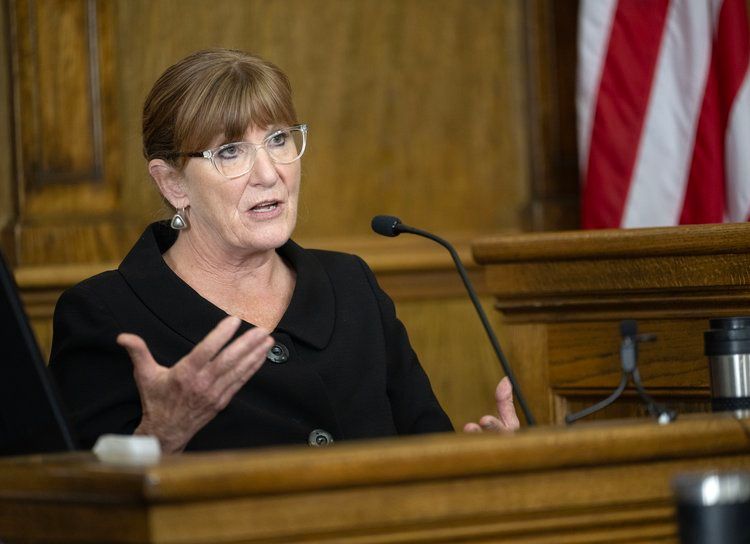
Evidence was also presented about Montana’s energy supply and its approach to permitting energy projects. Anne Hedges, policy and legislative affairs director at the Montana Environmental Information Center, testified that the state had previously considered climate change when reviewing fossil fuel projects, and that some projects were scrapped as a result. But she said it stopped doing so a decade ago faced with an industry backlash.
Hedges also claimed that Montana has never denied a permit for a fossil fuel project. This was later challenged by a state official although they could not give an example of when one had been recently denied.
The plaintiffs also sought to show how the changes they are pushing for could realistically and cost-effectively happen, bringing out Mark Jacobson, director of Stanford University’s atmosphere and energy programme, to lay out a roadmap for decarbonising the state’s energy grid by 2050.
How did Montana respond?
Defending itself against the case, Montana tried trying to characterise its contribution to global greenhouse gas emissions as minimal. In the state’s opening statements, attorney Michael Russell said there was “absolutely nothing” it could do to keep global warming under a safe limit, describing its role as that of a “spectator”.
Russell was also dismissive of the plaintiffs’ experiences, characterising the trial as nothing more than “sweeping, dramatic assertions of the doom that awaits us all”.
As a result, and with less media-friendly and obviously sympathetic witnesses on the stand, the second week of the trial had a very different feel.
AP reported that Montana officials giving evidence “sought to downplay” the case, saying they did not have authority to reject permits that fulfilled all the necessary regulations and noting that the laws being challenged could not be used as the basis for permit rejections.
A victory by the young people, the defence argued, would therefore not change whether fossil fuel projects were approved in Montana or not.
Sonja Nowakowski, the state Department of Environmental Quality’s air, energy and mining division administrator, told the court there wasn’t a single person in her department “who doesn’t care deeply about the environment and care deeply about the laws”. However, she said, “they’re charged with implementing and enforcing.”
The trial was shorter than scheduled because the defence withdrew oral testimony by climatologist Judith Curry, who had been expected to argue that climate change is a result of natural variability rather than human activity - and it ultimately did not question climate science outright. It also “sharply limited” the testimony of a second expert after plaintiffs’ attorneys questioned the credibility of the two witnesses.
A spokesperson for attorney general Knudsen told AP the decision not to put Curry on the stand was due to “strategy changes”. In a note on her own website, however, Curry was “deeply critical” of how the cross-examination of the plaintiffs’ climate witnesses had gone and said she had been concerned about how her own direct testimony would be handled.
In the end, the only expert called by state attorneys was Dr Terry Anderson, an economist and senior fellow at the Hoover Institute with ties to the tobacco industry. Anderson put a figure on the state’s greenhouse gas emissions, but this was questioned under cross-examination by the plaintiffs’ attorney Phil Gregory.
Gregory was unsuccessful in his attempts to strike Anderson’s testimony from the record, although judge Seeley admitted it “raised some questions.” It also emerged during the trial that Anderson was billing the state $500 per hour for his services as part of the defence.
In closing remarks, however, the defence sought to shift the tone. Russell said the trial had been “a weeklong hearing of political grievances”. “This case has received national attention in part because it has been billed or at least received as a sort of referendum on climate change generally,” he said. “This is not supposed to be a town hall meeting or popularity contest; it’s a court of law in which basic principles like causation and redress clearly still apply.”
In reporting of the end of the trial, both the plaintiffs and defence appeared confident about the cases they had made. “Ultimately, the Montana constitution and relevant statute do not leave the plaintiffs without recourse,” said Russell while the young people described feeling “hopeful”. 19-year-old Grace Gibson-Snyder, meanwhile, stayed behind to help tidy away cushions from the courtroom.
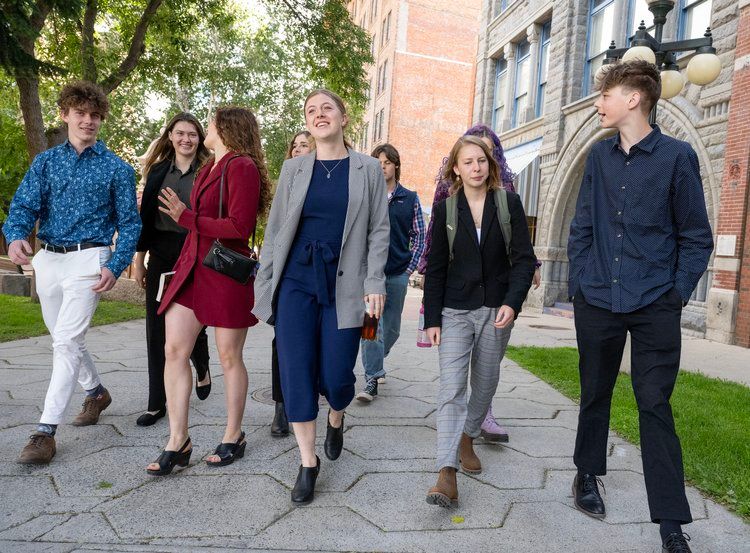
What now?
Now that the trial is over, judge Seeley will be considering the evidence. The Guardian reported that her decision could take “several weeks to emerge” while the Daily Montanan suggested a two-month timeframe.
Seeley has already said she would not order officials to formulate a new approach to address climate change.” Instead, she could issue a declaratory judgment saying officials violated the state constitution, although this would not immediately halt permitting of new fossil fuel projects.
Strictly speaking the decision would only set a legal precedent in Montana, but the Our Children’s Trust’s legal team hopes it will have an impact outside the state’s borders. Michael Gerrard, founder and faculty director of the Sabin Center for Climate Change Law at Columbia University told Mother Jones that a successful ruling for the plaintiffs “could be very energizing to young people and climate activists and lawyers around the country and indeed, around the world”.
However, there is a flipside to this if Seeley disagrees with the case. If she does not believe the climate science that was presented by the plaintiffs, “that would be more damaging”, said Gerrard. If the court were to agree that Montana’s contribution to global emissions is very small, he added, that would also be “harmful”.
AP noted that the Montana trial was being “closely watched”.
While the case was a landmark in giving young people the opportunity to state their climate case in court, it will soon be followed by others.
Navahine F. v. Hawai’i Dept. of Transportation defied moves to have it thrown out by the state of Hawai’i and will head to trial in September.
And Oregon-based youth plaintiffs in the Juliana v US climate case against the US government, which seeks to use the public trust doctrine, were recently told they can amend their complaint and have their evidence heard in open court. A trial date has not yet been set, although the Department of Justice is urging the federal court to reject efforts to revive the case.
Some climate advocates are also working to enshrine similarly robust environmental rights in other state constitutions, which they say could become the basis of future climate litigation.
Outside the US, some newspapers took the opportunity to highlight how climate litigation is going in their countries.
Greenpeace New Zealand’s head of campaigns said the Montana case would only inspire more people to fight back against corporates and politicians.
And Nathalie Chalifour, a law professor at the University of Ottawa, explained to Canadian readers that the nation’s courts would be carefully watching what happens further afield - something that is happening at an unprecedented level across the world.

